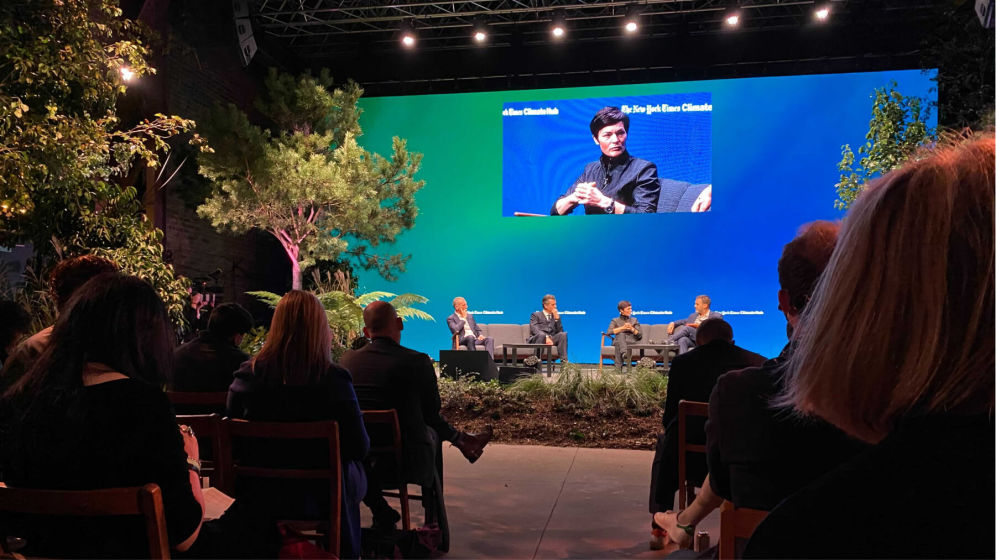The circular economycircular economyA systems solution framework that tackles global challenges like climate change, biodiversity loss, waste, and pollution. It is based on three principles, driven by design: eliminate waste and pollution, circulate products and materials (at their highest value), and regenerate nature. is key to tackling climate change — in order to reduce emissions and meet the targets set out in the Paris Agreement, we need to transform the way we make and use things.
Dame Ellen MacArthur joined BlackRock Vice Chair, Philipp Hildebrand, and former Danone Chair and CEO, Emmanuel Faber, at the New York Times Climate Hub earlier today, on a panel moderated by journalist David Gelles, to discuss how the transition can be financed, the leadership that will be required to drive the transition, and how solutions can be prioritised to create a just transition centred on equality and fairness.
Mobilising public and private finance has been a key area of focus in the opening days of COP26. As Ellen MacArthur explained, business as usual will not work in the long term and capital has to be invested in the right places in order to finance the circular economy transition. She called for greater investment in circular economy innovation to develop and scale future solutions.
Philipp Hildebrand welcomed the fact that finance has been at the forefront of discussions and said investing in systems change was an opportunity, not a sacrifice. The real sacrifice would be to do nothing, allowing climate change to worsen, he said. He further agreed with Ellen MacArthur on the need to invest capital where it was needed — that investing in the circular economy was distinct from sustainability and metrics were needed to identify and measure it.
Emmanuel Faber agreed that metrics were key, and also that the circular economy transformation went beyond sustainability. He said sustainability was not the preserve of an organisation’s sustainability department — that it was an issue, and an opportunity, for everyone.






